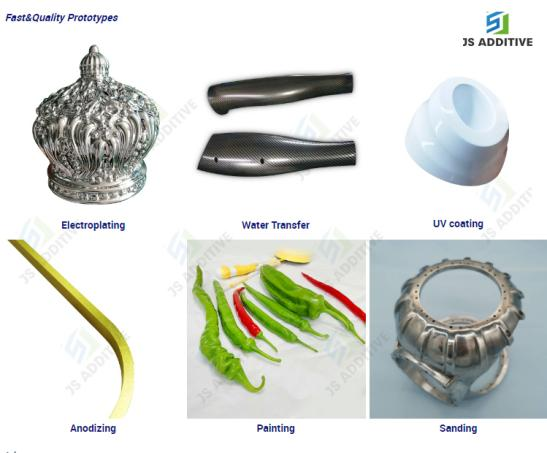Hand Polished
This can be used for all kinds of 3D printing. but it is more laborious and time-consuming to polish metal parts by hand.
Sandblasting
One of the commonly used metal polishing processes suitable for metal 3D printed parts with not very complex structure.
Self -adaptive grinding
A new grinding process that uses semi-flexible grinding tools, such as spherical flexible grinding heads. to grind metal surfaces. This process can polish some relatively complex surfaces. and the surface roughness Ra can reach below 10nm.
Laser polishing
Laser polishing is a new polishing method, which uses high-energy laser beam to melt the surface material of the part again to reduce the surface roughness. At present, the surface roughness Ra of the parts after laser polishing is about 2~3μm. However, laser polishing equipment is expensive, and it is rarely used (and still a little expensive) in the post-processing of metal 3D printing.
Chemical polishing
Using chemical solvent, parallel solvent is applied to the metal surface. It is more suitable for porous structure and hollow structure, and its surface roughness can reach 0.2~1μm.
Abrasive flow machining
Abrasive flow machining (AFM) is a surface treatment process that uses a mixture of liquid doped with abrasives that flows over metal surfaces under pressure to remove burrs and polish the surface. It is suitable for polishing or grinding some complex structures of metal 3D printed parts, especially for grooves, holes and cavity parts.
JSADD 3D‘s 3D printing services include SLA, SLS, SLM, CNC, and Vacuum Casting, and is available 24/7 to respond to customer requests for post-processing services once the print is complete.
Contributor: Alisa







